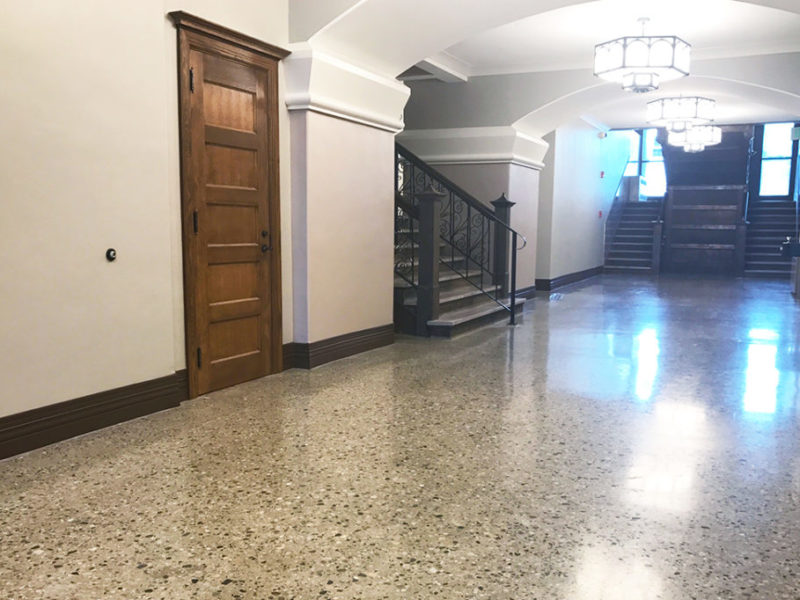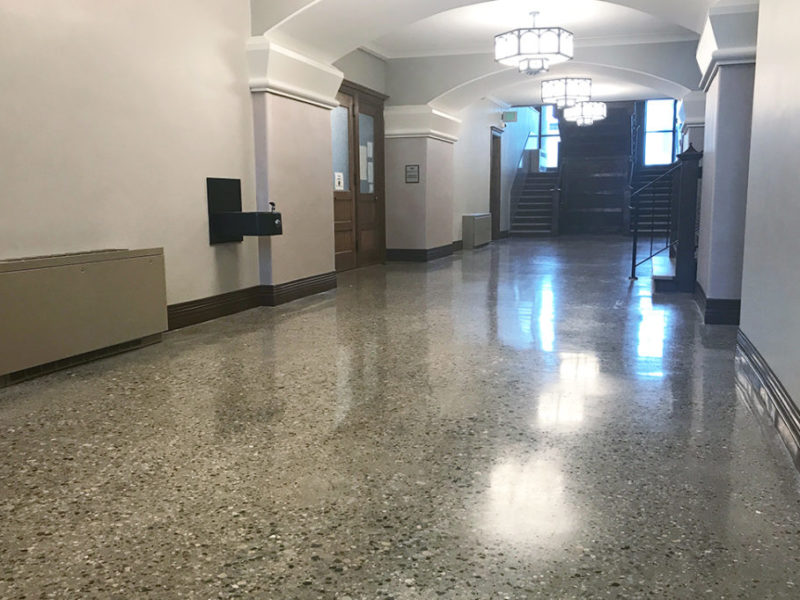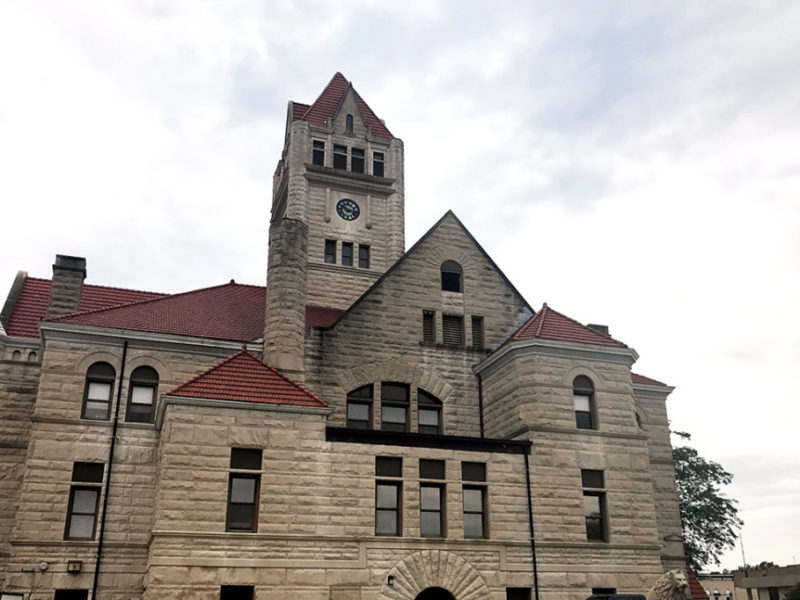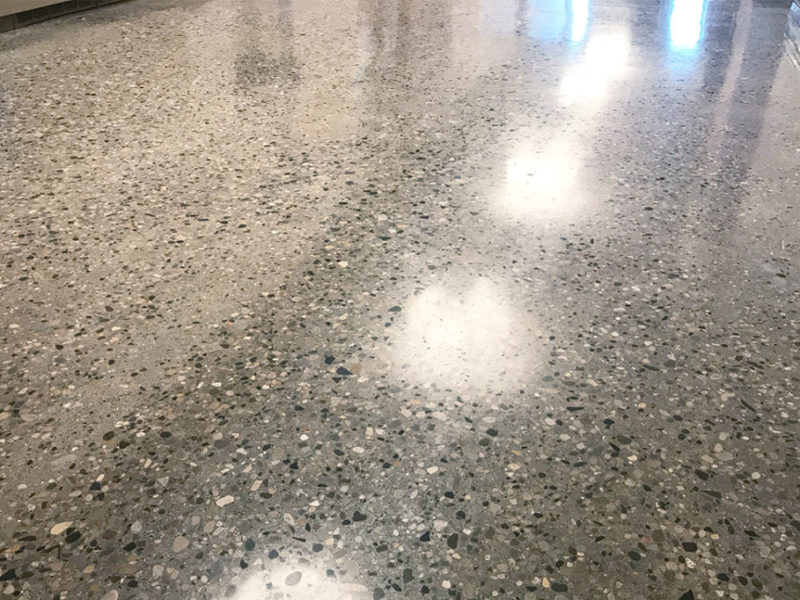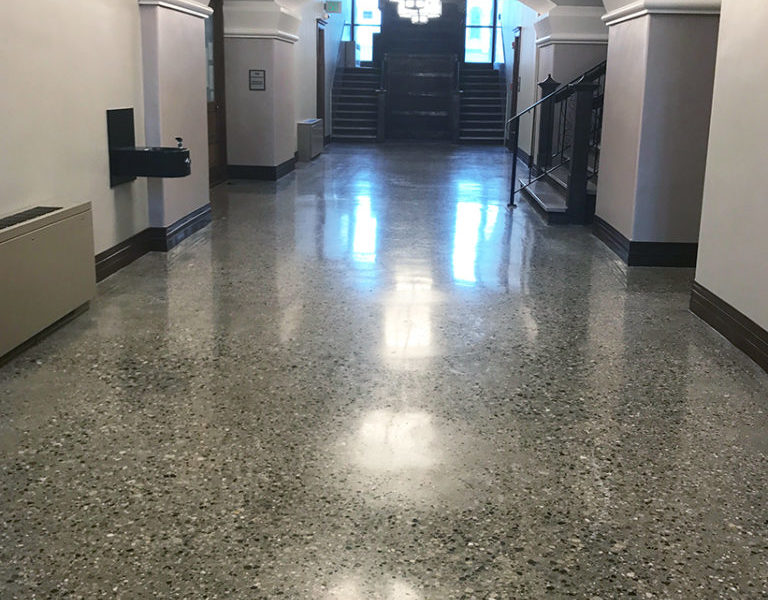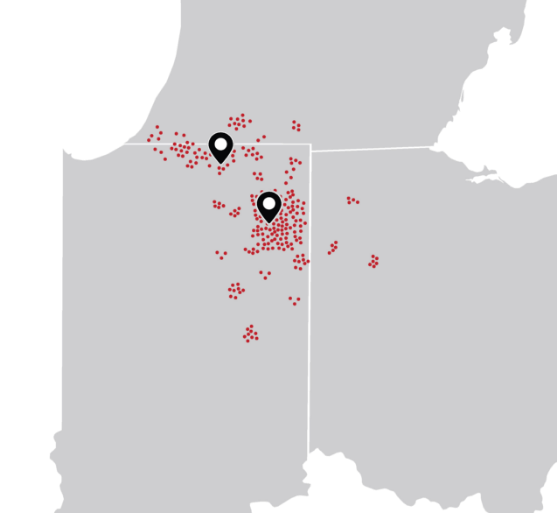Fulton County Courthouse
What is one to do with concrete floors that were poured between 1875 and 1895? Some may say, “Cover them up,” but the team at Viridian Architectural Design proclaimed, “polish them up!” Although unique in their pour style and aggregate exposure, the floors in Fulton County Courthouse located in Rochester, Indiana were in dire need of some T.L.C.
Aggregate stone used for concrete mixes in this modern era are created with angular stone due to the process in which the stone is mined and crushed, but stone from the 19th century was processed in a different way. The Dancer Concrete Design Team did not hesitate to share their knowledge of preserving this unique, round aggregate stone and made it visible by several passes of the concrete grinder.
Not only was the Team able to expose this antique aggregate pattern, but they were also able to solve the problem of the pin holes found on the floor by process of an extensive grout coat application. After the grout coat, the team applied a second layer of protection to the 2,200 square-foot space with a densifier to strengthen the surface even further.
This 122-year-old floor is now looking regal and timeless; consistent with its Romanesque architectural style, beautiful limestone exterior, grand arched entryway, and the symmetry of the cross-hall plan. This building can once again boast its position on the National Register of Historical Places and would be sure to make the original architects, Rush A.W. & Son and J.P. Gibson proud.
Architecture by Viridian Architecture.
Location
Rochester, Indiana
Serivces
Polished Concrete Floors
Systems
StrongTread Polish — Deep

